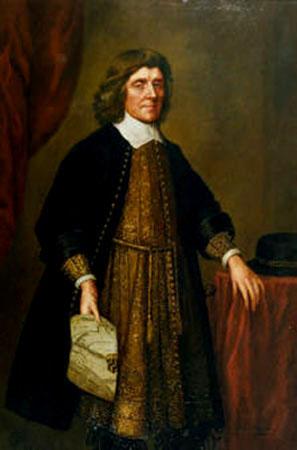Proprietary colony facts for kids

A proprietary colony was a special type of English colony mainly found in North America and the Caribbean during the 1600s. In the British Empire, the king or queen owned all the land. They had the power to divide it up however they wanted.
So, all colonial lands were given out in one of four ways: proprietary, royal, joint stock, or covenant. In a proprietary system, the king or queen of Kingdom of England gave special business permits, called charters, to individuals or groups. These owners, called proprietors, then set up and ran the colonies. They also chose the governors and other leaders for their colony.
Over time, this way of ruling indirectly became less popular. As colonies grew and became more organized, the English kings and queens wanted more direct control. So, many proprietary colonies were changed into Crown colonies. This meant the king or queen directly appointed the officials who governed them.
Contents
How Proprietary Colonies Worked
Proprietary colonies in America were run by a lord proprietor. This person had a lot of power, almost like an independent ruler. This power came from a royal charter given by the king or queen.
These colonies were different from Crown colonies. Crown colonies were directly controlled by the king. Proprietary colonies were more like businesses set up with the king's permission. The proprietors had legal duties to the colony. They also had to make sure their investments were safe for the people who put money into the colony.
The proprietary system often wasn't very efficient. Many proprietors were like absentee landlords. This means they owned the land but didn't live there or visit often. By the early 1700s, most proprietary colonies had either given their charters back to the king. Or, the king had placed strong limits on their power. This made them more like royal colonies.
Examples of Proprietary Colonies
In the Caribbean
In British America (Before the American Revolution)
The provinces of Maryland and Carolina were first set up as proprietary colonies. Many other colonies in the Americas also started this way.
King Charles II used the proprietary system to reward his friends. It also helped him focus on Britain itself. He gave his friends colonial charters. These permits helped private investors and allowed the colonies to govern themselves. The charters made the proprietor the main ruler. But they still had to follow English Law and answer to the King.
King Charles II gave the former Dutch colony of New Netherlands to his younger brother, the Duke of York. This became the Province of New York. He also gave land to William Penn, who started the Province of Pennsylvania.
The British American colonies before the American Revolution included thirteen colonies. These colonies later became states of the United States of America.
- Virginia Colony
- Province of Georgia
- Province of North Carolina
- Province of South Carolina
- Province of Pennsylvania
- Province of Massachusetts Bay
- Province of New Hampshire
- Colony of Rhode Island and Providence Plantations
- Connecticut Colony
- Province of Maryland
- Province of New York
- Province of New Jersey
- Delaware Colony
In Canada
- Newfoundland and Labrador
- Nova Scotia
- New Brunswick
- Upper Canada (parts of today's Ontario)
- Lower Canada (parts of today's Quebec)
Similar Ideas in Other Countries
Historical European Examples
In medieval Europe, kings often gave great power to lords in border areas. This was to help protect against invasions. These areas were sometimes called palatinates. The lord in charge had powers almost like a king in his own area. This was because he acted for the king there.
This kind of setup caused problems in England's border counties during Norman times. These areas were known as counties palatine. They lasted for a long time, partly because they were far away and communication was difficult. The king could always remove the lord's power if needed.
French Examples
In 1603, Henry IV, the King of France, gave Pierre Du Gua de Monts the sole right to settle lands in North America. These lands were between 40° and 60° North latitude. The King also gave Dugua a monopoly (exclusive right) to the fur trade in these areas. He named him Lieutenant General for Acadia and New France.
In return, Dugua promised to bring 60 new colonists each year to l'Acadie. In 1607, his monopoly was taken away, and the colony failed. But in 1608, he helped Samuel de Champlain start a colony in Quebec.
The Iles Glorieuses, or Glorioso Islands, were settled and named by Frenchman Hippolyte Caltaux in 1880. He owned them until 1891. On August 23, 1892, France officially claimed them. Caltaux became their owner again from 1901 until he died in 1907. In 1960, the islands became a regular French possession.

